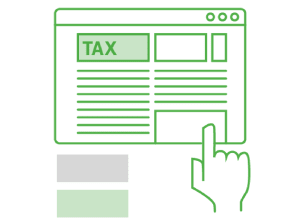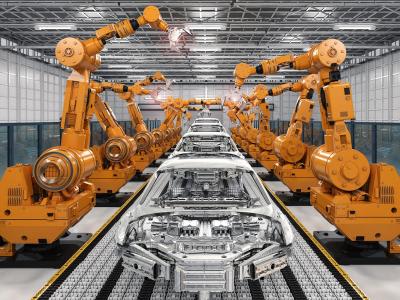Poland’s automotive industry is one of the most important manufacturing sectors in Poland, accounting for 11.1 % the total value of the country’s production, and is second only to the food industry. In recent years Poland has attracted a substantial amount of foreign direct investment in the automotive manufacturing sector and, consequently, has become one of Central and Eastern Europe’s major manufacturing hubs for cars, car parts and components. Automotive manufacturing has evolved into one of Poland’s key industries in terms of production value, employment, capital expenditures and exports. Poland is the region’s largest automotive market in terms of sales and services.
Polish automotive sector in numbers:
- Industry income: ~ 34.9 billion EUR
- Total industry share: 11.1 %
- Number of employees: 240 500
- Average salary: 1152.92 EUR
- Annual production: 642.5 thousand motor vehicles
- Export volume: 28.7 billion (3.8% yoy)
- Total of FDI positions: 10.3 billion EUR
Why Poland?
In the last decade, the Polish automotive industry recorded a 100% increase in sold production.
The automotive industry is one of the strongest pillars of the Polish economy, which in 2019 generated 8% of GDP and 21% of export value.
Automotive industry is the second largest industrial sector in Poland (11.1% share)
Poland’s main assets in the field of automotive industry
High qualifications and availability of employees – Both in terms of absolute numbers and in terms of quality, Poland has the largest number of working-age people with a solid technical education in this part of Europe. 1.4 million students, of whom over 300,000 are involved in engineering faculties, are a potential that translates directly into the excellent financial and quality results of companies investing in Poland.
Transport infrastructure
Poland has been dynamically developing and modernizing its transport infrastructure both road, rail, air and sea. Planned investments in the development of motorways and expressways in the coming years will soon translate into Poland's position as 5th in Europe in terms of the length of the highest category road network (ahead of Great Britain). Thanks to numerous investments in the development of port terminals, especially containers, I will also allow Polish ports to obtain regular connections served by the largest ships from Asia and the rest of Europe.
Cooperative Opportunities
The presence of over 660 subcontracted companies with IATF 16949/2016 certificate, as well as four vehicle manufacturing plants (VW, FCA and PSA Group with the Opel plant), bus factories (Solaris, MAN, Scania, Volvo, Autosan, URSUS/AMZ) and one MAN truck factory increases the chance of participating in the creation of added value in the sector. Poland specializes in the production of car parts of well-known brands, mainly engines, including Volkswagen, Toyota, FCA are already operational, Opel and Daimler are waiting for the production to start. Neighboring Central European countries with developed automotive sectors is also crucial as it creates many opportunities for cooperation.
E-mobility
Poland has grand ambitions for e-mobility and now the legislation is in place to help the country realise its goals. It can be certainly confirmed that the development and popularization of electromobility is the official priority of the country. Special discount programs and co-financing for producers (e.g. the E-bus program), as well as support for the development of infrastructure for e-mobility give hope for creating additional business opportunities. The estimated total value of programs related to this field may even exceed 4 billion EUR in the next ten years.
Financial Efficiency
There are many opportunities for foreign companies to obtain financial support for projects in Poland both from European Union Funds and domestic sources, including direct cash support and tax exemptions. An equally important issues include work organization and other operating costs, which in Poland remain at a competitive level. For example, in the area of social security charges, the burden imposed on the employer in Poland is at the second lowest level among the countries of the region.
R&D Activity
Activity of large R&D centres has a positive impact on the development of regions in which they are located. In Poland, a mature ecosystem of cooperation with universities and the high quality of education create a solid foundation for the development of R&D facilities. Many companies are working with local academic centres and other scientific institutions, which create strategic alliances between business and science, such as ZF TRW, Delphi, Wabco, Faurecia, Nexteer, Tenneco, Eaton, Valeo, Mahle, GKN Driveline.
Learn more about related services
What exactly makes up the Polish automotive industry?
The Polish automotive sector focuses primarily on production, which is divided into three main parts:
- production of motor vehicles, including production of passenger cars, buses, motor vehicles for transport of goods and other vehicles, as well as production of engines for motor vehicles and tractors;
- production of vehicle bodies, trailers and semi-trailers;
- production of parts and accessories for motor vehicles.
Annual production in 2019 amounted to 642.5 thousand motor vehicles, which gave Poland the third position among the countries of Central and Eastern Europe in terms of cars produced. The most significant number of vehicles produced, almost 435 thousand, were passenger cars.
Export of automotive products
The most significant value of the automotive products export in Poland in 2019 concerned passenger cars, with an export value of 6.1 billion EUR. According to the source, the highest increase in exports compared to 2017 was recorded among buses.
The high domestic value added in Poland’s automotive exports results from the country’s specialisation in attracting investors to the auto parts and components industry; manufacturing them creates more domestic value added than assembling cars. Poland’s stronger, compared to the other V4 countries, forward linkages in the automotive value chain present opportunities to increase the benefits of participating in GVCs.
Investment incentives in Poland
The automotive sector is a priority sector for the Polish government. The principal forms of support for investors in the automotive sector include:
- income-tax exemptions for investments in the Special Economic Zones;
- real-estate tax exemptions granted under relevant local government regulations applicable for the investment location; various forms of support for the employment of registered unemployed persons, offered by local Employment Agencies (at the level of poviats);
- aid offered under co-financed EU programs aimed at supporting R&D activities (e.g. Innomoto);
- tax credit for R&D activities.
Sources:






